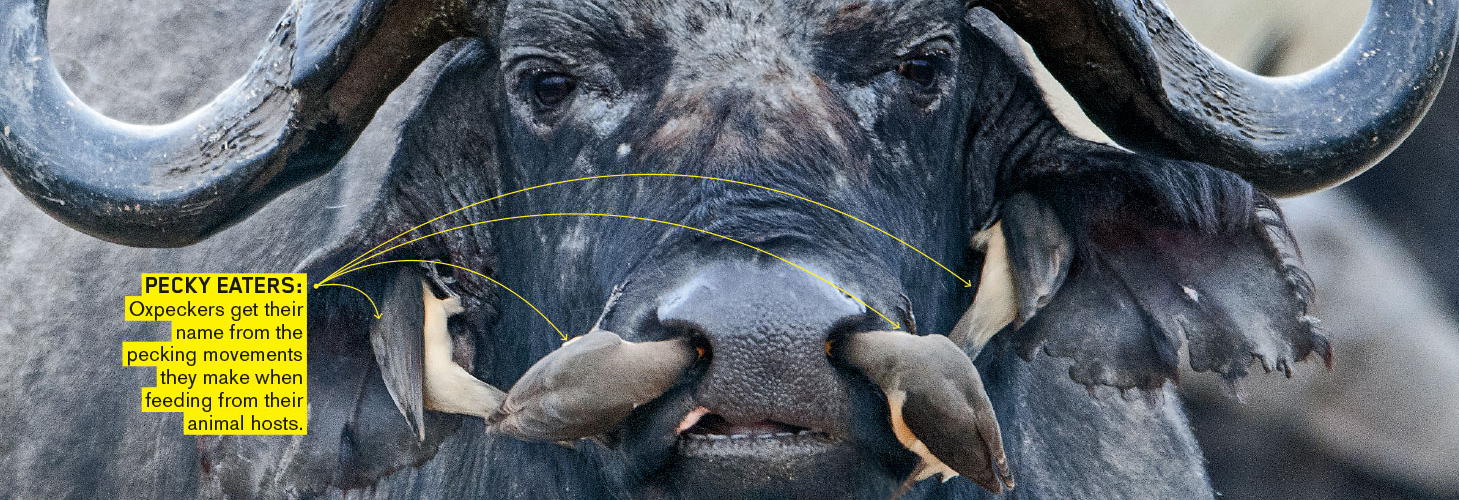Why are these oxpeckers sticking their heads into the ears and nostrils of this buffalo in the African nation of Tanzania? They’re looking for things to eat—like earwax, snot, and ticks!
Oxpeckers also perch on other hooved mammals, such as rhinos, giraffes, and zebras, to feed. Although oxpeckers eat a variety of things off their hosts’ bodies, they prefer to consume blood. The birds land on an animal and open an old wound—or create a new one—to feed on blood. Other times, oxpeckers will nibble on ticks attached to animals. Ticks are small arachnids, related to spiders, that drink animals’ blood. The birds pick off these parasites to eat the blood they’ve collected.

